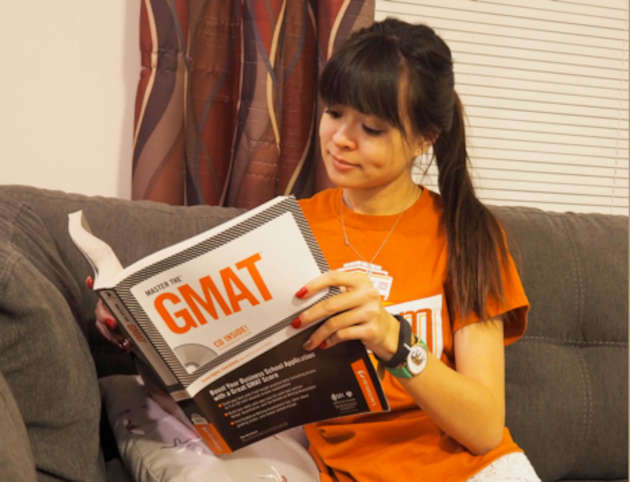
For a lot of us, we prepared for our university entrance exams years before we needed to take them. In this article, I’ll let you in on the best GMAT study tips. Personally, I took my first practice SAT test while in middle school, when some of my friends had already started taking test-prep courses. We reviewed math tricks, studied vocab flashcards and looked over past essay questions before taking our ‘final’ SAT test (which I ended up retaking three times to get the score I wanted). Then, we applied to college, and we were finally done with these weird entrance exams!
That is, until we decided to go to graduate business school, and we were required to take this thing called the Graduate Management Admission Test, the “GMAT.”
The GMAT is an entrance exam that can help you get accepted to a program in the Naveen Jindal School of Management. The GMAT has four test sections making the test just under four hours long: the Analytical Writing Assessment, Integrated Reasoning, Quantitative and Verbal. Test times are extremely flexible, since you can schedule an appointment at a date and time convenient to you. The test is taken on a computer, and you receive your score (minus the essay) as soon as you finish.
As a quick hint, if you’re already a Jindal student, you may not have to take the GMAT to get into a master’s or MBA program. Fast-Track Programs exist for many degrees. These are options where you begin taking graduate-level courses the final year you are working toward your undergraduate degree. If you make high enough grades, you not only get credit toward your master’s degree (at the cost of an undergraduate course), but you also do not need to submit a GMAT or GRE score with your graduate application.
However, I unfortunately did not plan far enough in advance to take my fast-track courses, so I decided to take the GMAT. These were the steps that I took that led me to getting accepted into the Jindal School. I:
- downloaded the free GMAT Prep software. It came with practice exams created by the people who create the GMAT. I made the exact same score on my second practice exam from here as I did on the real GMAT. Scary accurate!
- took the free practice tests. Before I began studying, I wanted to gauge where I was. Based on the free GMAT practice exam, I was able to see what areas I was struggling in and needed to focus on more. Find practice tests and questions online — take them.
- scheduled my exam far in advance and created a plan. Since the dates are flexible, my initial thought was to take my time studying and then register for the GMAT when I was ready. However, with this method I found myself putting off preparing, and I was lazy with my studying. I scheduled my exam a few months out and created a week-by-week breakdown of sections I needed to work on.
- used the library’s resources. As a college student on a budget, I was not interested in purchasing expensive test-prep books that get outdated in a year. Fortunately, the UT Dallas library has test-prep books available for you to use and check out! I borrowed an overall GMAT book and read through it; these books usually come with additional practice problems and exams for you as well.
- didn’t stress out. The biggest downside about the exam is that it is expensive to take. However, worst case scenario, if you do not like your score, you can always take it again!
Self-study not your style? The Jindal School offers GMAT classes; you can sign up to take them one at a time. Good luck on your exam!
If you have already taken the GMAT, please comment your suggestions for future Comets. We would love to see what other tips you may have!




